
When running a business, numerous elements play a role in shaping its growth and success. Competition is a key factor, especially in a saturated market with numerous players.
Unless you are a monopoly, you have to be innovative and consistently improve your offerings to secure significant market share and generate profit.
Strategic Beginnings: P&G
Before the 1900s, soap and candles were made out of lard and tallow. This market was monopolized by the meat packing industry which influenced the price of these raw materials.
Candle maker, William Procter, and his brother-in-law, soap maker James Gamble strategized on a plan to gain dominance in this industry and oust their competitors.
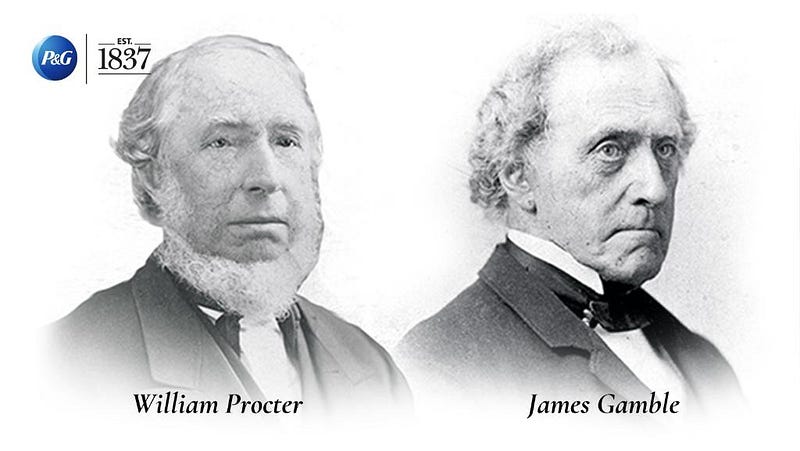
Having established a successful presence in the industry through their company, P&G, they set their sights on expansion and becoming a monopoly in the market.
Waste, Science, and Wit
In 1794, the cotton gin was invented, transforming the industrial separation of seeds from cotton fibers. This innovation revolutionized the cotton industry, enhancing the efficiency of large-scale production and making cotton exportation highly profitable.

The invention also had grim consequences, contributing to the proliferation of slavery in the southern United States.
Despite the substantial profits derived from the extensive cotton production, cotton producers faced a significant challenge in disposing of the waste generated by the cotton seeds.
While these seeds could be converted into industrial oils with diverse applications at the time, producers were reluctant to shoulder the responsibility of managing this waste.

P&G identified this opportunity and made the strategic decision to transition to cottonseed oil as a raw material for their soap and candles. This shift freed them from reliance on lard and tallow, which they had little control over.
This was a stroke of genius, particularly given the booming cotton production as most producers were eager to get rid of their waste.
Additionally, they partnered with a German chemist E. C. Kayser to develop the science of hydrogenation. Hydrogenation is the process of infusing hydrogen gas into oils and fats to turn them from liquid to solid form.
With this new science, they successfully converted cotton seed oil into a semi-solid fat substance closely resembling lard. By 1905, P&G had acquired eight cottonseed mills in Mississippi, gaining substantial control over the sourcing of their raw material.

With an innovative scientific approach and substantial control over the sourcing of raw materials, P&G had the ingredients it needed to revolutionize the industry. They became dominant, amassing profits due to these strategic plays.
However, something else was looming on the horizon.
Waste to Kitchen Essential
The advent of electrification forecasted a decline in the candle industry. A decreased demand for candles was likely, and P&G acknowledged that they needed to pivot their business.
This was when they came up with a brilliant idea:
Why not take hydrogenated cottonseed oil, which resembles lard, and sell it as food?
With that, Crisco (crystallized cottonseed oil) was born.

The Art of Selling
Miraculously, P&G somehow managed to convince households to start cooking with Crisco, even though at that time, seed oils were barely considered edible.
For the most part, people prepared meals using tried and true animal fats like lard, tallow, and butter. Seed oils were used in lubricating machine parts, and as fuel — certainly not human consumption.
P&G invested heavily in marketing and advertising, their main target being the stay-at-home mums who predominantly prepared meals using animal fats.
They portrayed Crisco as a healthier, cleaner, more digestible, and affordable alternative to lard and butter.

P&G also published a cookbook called The Story of Crisco, containing over 600 recipes for various foods made with their new vegetable-based shortening.
They aimed to make the unfamiliar oil more appealing to home cooks as opposed to traditional fats.
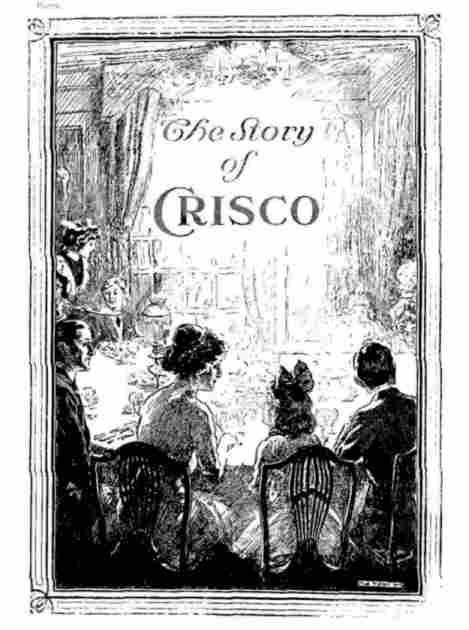
And this strategy worked!
The cookbook depicted families as more enlightened and modern, employing a strategic marketing technique to instill a fear of missing out (FOMO) among households hesitant to adopt Crisco. Word was spreading on the street, and masses were boarding the Crisco train.
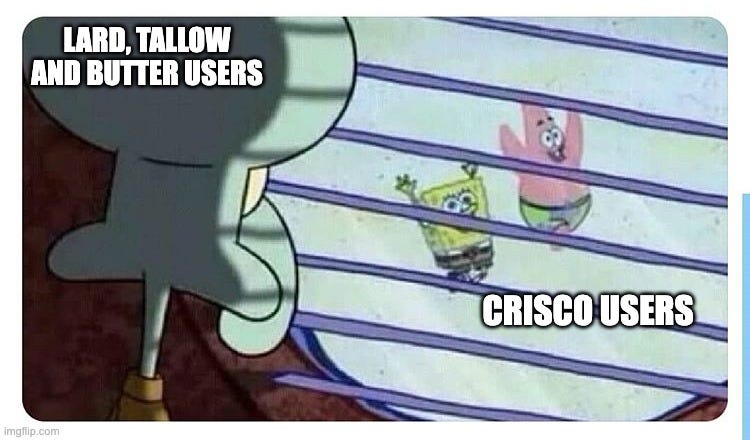
Animal fats were comparatively more expensive at the time, a huge incentive for people to shift to this new product. The marketing effectively positioned the product as progressive and cost-effective.
While the purported health claims of Crisco lacked scientific grounding, P&G had grown into an influential corporation with a trusted brand. In the post-World War II era, a shift in perception occurred, deeming animal fats as unhealthy and modern vegetable oils as the viable replacement. This echoed the sentiments of industry giants producing seed oils at scale.

The sway of a major corporation like P&G, coupled with clever marketing tactics, contributed to the widespread acceptance of this narrative. They effectively used their influence to reshape the cooking oil landscape, setting the stage for other companies to follow suit.
This led to the large-scale adoption of vegetable and seed oils in the diet, and animal fats just couldn’t compete.
Chilling With The Big Boys
Today, P&G boasts a staggering net worth exceeding 300 billion dollars, establishing a dominant market presence with an extensive range of household and personal care products.
As of January 2024, P&G is the 22nd most valuable company by market cap.
Among its major brands are Gillette, Crest, Charmin, and Pampers. Operating in nearly 40 countries worldwide, P&G distributes its products in over 180 countries, catering to an astounding 5 billion consumers.

B&G Foods acquired Crisco in 2002, and P&G fully transitioned away from food products in 2012, after selling its Pringles snack food business to Kellogg’s.
Looking back at Crisco, was it really legitimate or just hype?
Cooking Oils in the 21st Century
Seed oils dominate the modern cooking oil landscape. The top globally consumed oils today are:
- Canola (rapeseed) oil
- Corn oil
- Cottonseed oil
- Grapeseed oil
- Peanut oil
- Rice bran oil
- Safflower oil
- Soybean oil
- Sunflower oil
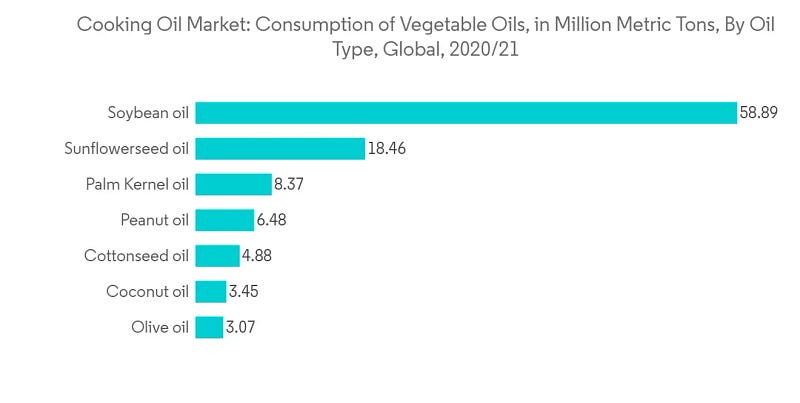
These oils, readily accessible and boasting extended shelf life, are used in many households and restaurants globally.
Moreover, they are ingredients in popular snacks and baking recipes, including cookies, nuts, potato chips, roasted nuts, and certain brands of ice cream, cakes, and pies.
As cottonseed oil extraction became more expensive, P&G shifted to using soybean oil in the production of Crisco.
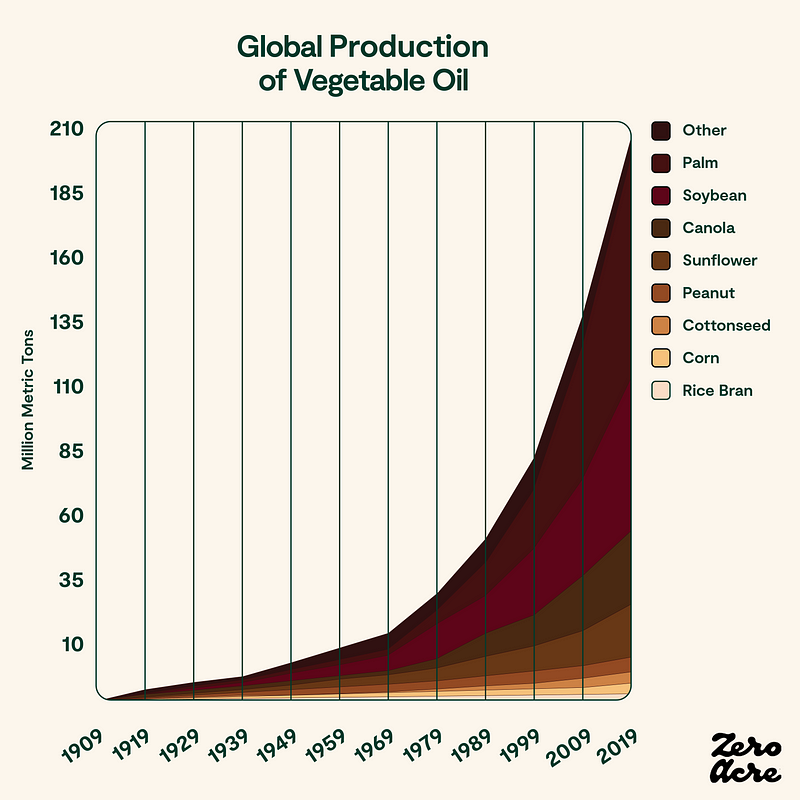
Fat in the Diet
Fats are incredibly important in the diet, serving diverse hormonal, metabolic, and structural roles essential to human health and survival. Some of these roles include:
- Energy: Dietary fats are a good source of energy.
- Hormone production: Fats are essential in the synthesis of different hormones such as testosterone, estrogen, and cortisol which regulate different body processes.
- Absorption of fat-soluble vitamins: Fats facilitate the absorption of vitamins A, D, E, and K into the body from foods.
- Brain Health: Dietary fats are essential in promoting optimal brain health and boosting mood.
Sources of Dietary Fat
We source this important macro-nutrient from different sources. They are broadly classified into:
Saturated Fats: Found mainly in animal products like meat, full-fat dairy, and tropical oils. They are solid at room temperature due to their molecular structure. Examples include butter, lard, tallow, coconut oil, and palm oil.
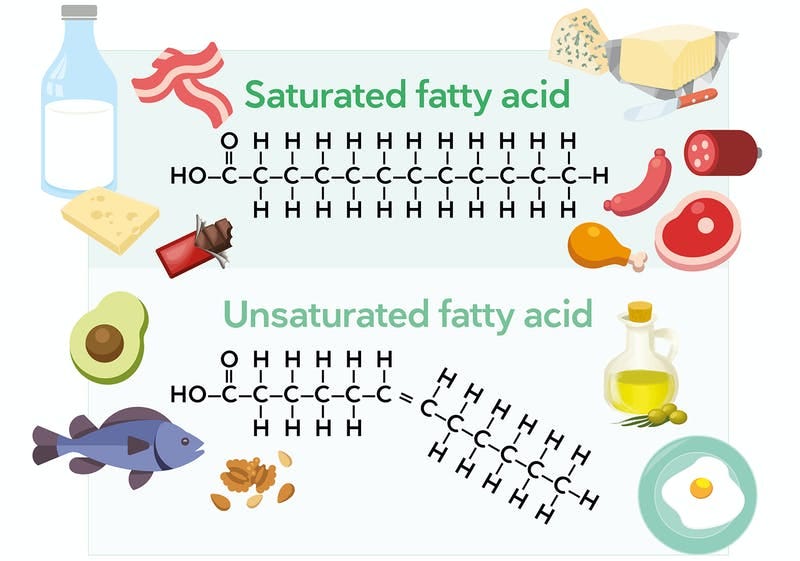
Unsaturated Fats: Further classified into mono and polyunsaturated fats. Monounsaturated fats are found in plant oils like olive oil, canola oil, peanut oil, and avocados.
Polyunsaturated fats are found in mainly vegetable and seed oils like sunflower, corn, soybean, safflower, and cottonseed oils. They are liquid at room temperature.

Trans Fats: Formed through hydrogenation, turning healthy unsaturated fats into solid partially hydrogenated oils. Trans fats can be found in a variety of food products including commercial baked goods (cookies, cakes, pies), microwave popcorn, fried foods (french fries, fried chicken, fried ice cream, fried Coca-Cola), coffee creamers and stick margarine.
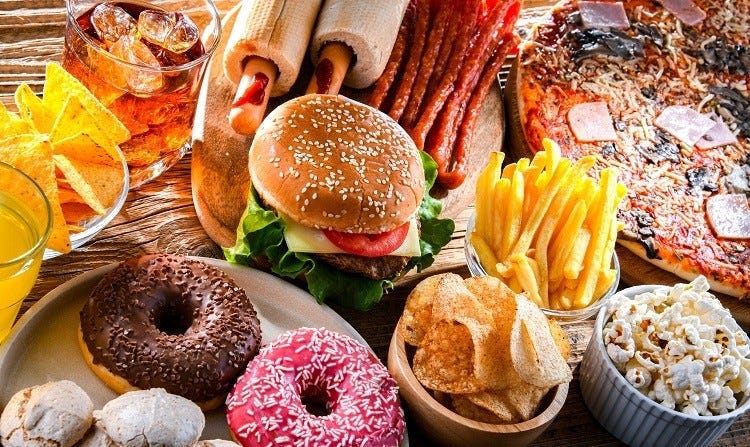
Essential Fatty Acids
Essential fatty acids (EFAs) are types of polyunsaturated fats that the human body cannot synthesize on its own and must be obtained through diet or via supplements.
The two main essential fatty acids are:
- Omega-3 fatty acids — Found in fatty fish, walnuts, flaxseeds, chia seeds, and some plant oils. They provide anti-inflammatory effects and heart health benefits.
- Omega-6 fatty acids — Found in vegetable oils like soybean, corn, safflower, sunflower, peanut, and cottonseed oils. Omega-6s are pro-inflammatory in excess.

Ideally, the recommended ratio of omega-6 to omega-3 fatty acids in the diet should be within the range of 1:1 to 4:1.
However, in most modern diets, this ratio often exceeds 16:1, primarily due to the elevated consumption of seed oils. This has been linked to different chronic health problems.
Modern Science Chimes In
Between 1909 and 1999, the worldwide consumption of seed oils experienced a staggering increase of over 2000%. We use them to prepare meals and even consume them indirectly through different food items.
In the same period, the rates of heart disease, diabetes, obesity, and metabolic ailments have skyrocketed as well.

While correlation does not imply causation, recent scientific research, and studies have provided novel perspectives on this ongoing debate that warrant further examination.

Linoleic Acid
Linoleic acid, an omega-6 polyunsaturated fatty acid, is a predominant component in numerous seed oils, and naturally occurring in nuts and seeds.

It is abundantly present in packaged foods such as salad dressings, spreads, ice cream, potato chips, cookies, mayonnaise, and ranch dressings. Animal products like beef or dairy contain relatively low amounts of linoleic acid.
The recommended intake of linoleic acid is ideally limited to 1–2% of total calories. Exceeding this threshold may lead to various health conditions.
A big worry comes from linoleic acid being kind of sensitive. Being an unsaturated fatty acid, it is prone to oxidation more easily.
Why is this a concern?
Linoleic acid easily reacts with oxygen, accelerating the process of rancidity and producing free radicals that can lead to cell damage and disease. This oxidative instability shortens the shelf life and fry life of cooking oils.

That’s why certain vegetable oils, like olive oil, are kept in dark bottles — it helps prevent them from going bad due to oxidation. If your olive oil isn’t in a dark container, it is most likely fraudulent.
To make them more stable, most industrial companies hydrogenate their seed oils but this turns them into artificial trans fats which have been proven to be detrimental to human health, predisposing people to coronary heart disease.

Although countries like Denmark, Switzerland, Canada, and the United States have imposed regulations on the inclusion of trans fats in food products, a lot of countries globally have yet to follow suit.
Effects on Health
With most seed oils having a high amount of linoleic acid and an increased ratio of omega-6 to omega-3 fatty acid intake, researchers have conducted various clinical studies and experiments to understand the impact of this dietary change.
Heart Health
Linoleic acid consumption has been linked as a causative factor in atherosclerosis and coronary heart disease. Due to its instability, linoleic acid oxidizes easily, and the resulting oxidative products cause inflammation and atherosclerosis.

Numerous evidence implicates omega-6-rich vegetable oils:
- Greater amounts of linoleic acid were found in the plasma of patients with atherosclerosis.
- Linoleic acid is inflammatory to the walls of blood vessels.
- Linoleic acid metabolites promote cardiac arrhythmias, organ failure, and cardiac arrest.
Reducing the amount of omega-6 fatty acids mainly from vegetable/seed oils is recommended as a measure to decrease one’s susceptibility to heart disease.
Obesity & Diabetes
Recent studies show that linoleic acid is positively related to insulin resistance.

When you become insulin resistant, your cells don’t respond as well to insulin. This causes glucose to build up in the blood instead of being absorbed by cells. The pancreas tries to compensate by producing more insulin.
This results in high insulin and high glucose levels, and the cycle repeats, leading to insulin resistance.
Insulin resistance is a precursor for developing type II diabetes, weight gain, and high blood pressure.
Inflammatory Disorders
As discussed linoleic acid, and in general omega-6 fatty acids are inflammatory, and their byproducts reduce tissue levels of anti-inflammatory omega-3 fatty acids.

A study on patients with Crohn’s disease showed that omega-6 linoleic acid stimulated greater inflammation than baseline as opposed to monounsaturated fats.
In a separate study higher linoleic acid levels were associated with asthma, chronic pain, arthritis, and migraines.
Fertility, Pregnancy and Child Development
Linoleic acid tends to accumulate in gametes (egg and sperm cells), it may reduce fertility and interfere with healthy child development according to studies in humans, animals, and cells.
In 2018, a Korean study of over 1000 pregnant women showed that high maternal intake of omega-6 fatty acids increased the risk of infants being below the 10th percentile of birth weight.

A 2010 study on male fertility showed that men with significantly higher levels of linoleic acid and lower ratios of omega-6 to omega-3 were more than likely to not conceive children.
The Allegations
People often associate vegetables with health benefits like weight loss, immunity boosting, and obtaining nutrients like Vitamin A. As a result, when trying to improve their health, many turn to increasing vegetable consumption.

This positive perception extends to vegetable oils, which are assumed to be healthy since they are made from vegetables. However, most vegetable oils today are made from seeds, they are not cold-pressed from kale or broccoli.
Still, the popular belief persists that vegetable oils are healthy, and views to the contrary may be dismissed as conspiracy theories.
Meanwhile, animal fats have been vilified, with their cholesterol content often blamed for the same health issues linked to seed oils.
If you inquire from individuals who abstain from animal fats, why they do so, you’ll likely hear something along these lines:
Animal fat clogs your arteries
Animal fats raise cholesterol levels
Animal fats lead to weight gain
Animal fats are unhealthy
However, is the perception that animal fats are inherently unhealthy a result of sophisticated and persuasive marketing tactics along with outdated nutritional guidelines?

Are people merely echoing what they have been told by trusted brand names over the years, or are these claims based on sound science? Are animal fats ever going to beat the allegations and be viewed differently?
Let’s take a closer look in the next blog and investigate why this perception is still widely held.
One Comment
Comments are closed.